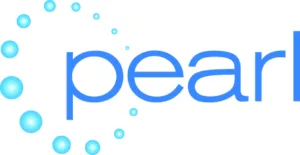Pearl TV today applauded the Federal Communications Commission’s publication of a draft proposed rulemaking that would authorize television broadcasters to deploy on a voluntary basis the next generation, IP-based TV broadcasting technology. Pearl is a business organization of eight large station groups which collectively operate more than 220 local TV stations.
“As broadcasters focused on the development and deployment of new technology, Pearl is pleased that the FCC is launching a rulemaking that would allow the voluntary adoption of next generation TV. ATSC 3.0 will give broadcasters the tools they need to compete in a vastly different environment than when digital TV was first imagined. The move to an Internet Protocol-based system will deliver more content to viewers from more sources and insure that over-the-air broadcasting remains the primary resource for breaking news, emergency alerts, and a TV experience tailored to the desires of the viewer,” said Pearl TV managing director Anne Schelle.
Viewers Want Next Gen TV Features
The new next generation TV capabilities of enhanced video and improved audio, along with interactive and enhanced emergency services, are driving strong interest in ATSC 3.0 functionality, according to a recent survey of more than 500 U.S. Smart TV owners. Among the key findings of a Frank N. Magid Associates study from last spring:
- Consumers overwhelming see next generation television as a way to improve their viewing experience, with 68% rating the new capabilities of the ATSC 3.0 standard as very appealing.
- More than half of those surveyed said they would be looking for a product that offered High Dynamic Range to enhance viewing.
- More than two-thirds of those surveyed like the idea of enhanced emergency alerts on all devices when it matters most, including with the approach of severe weather. And they appreciate the fact that broadcast services will likely work even when cell reception and traditional cable service would be down and out of service.
- Two-thirds of those surveyed said they are looking forward to immersive audio that raises audio reproduction to a new level. The capability to personalize content also ranked high with survey respondents.
- Two-thirds also found the ability customize the viewing experience and the range of interactive features of the new standard very appealing.
The new ATSC 3.0 next-generation TV standard is expected to be a transformative technology for broadcasters, allowing television stations to deliver Ultra HDTV and HDR signals, enhanced audio, hybrid broadband and linear TV experiences, improve emergency alerting and accessibility features, send video-on-demand content, and even enhanced advertisement targeting to reach specific segments of viewers.

